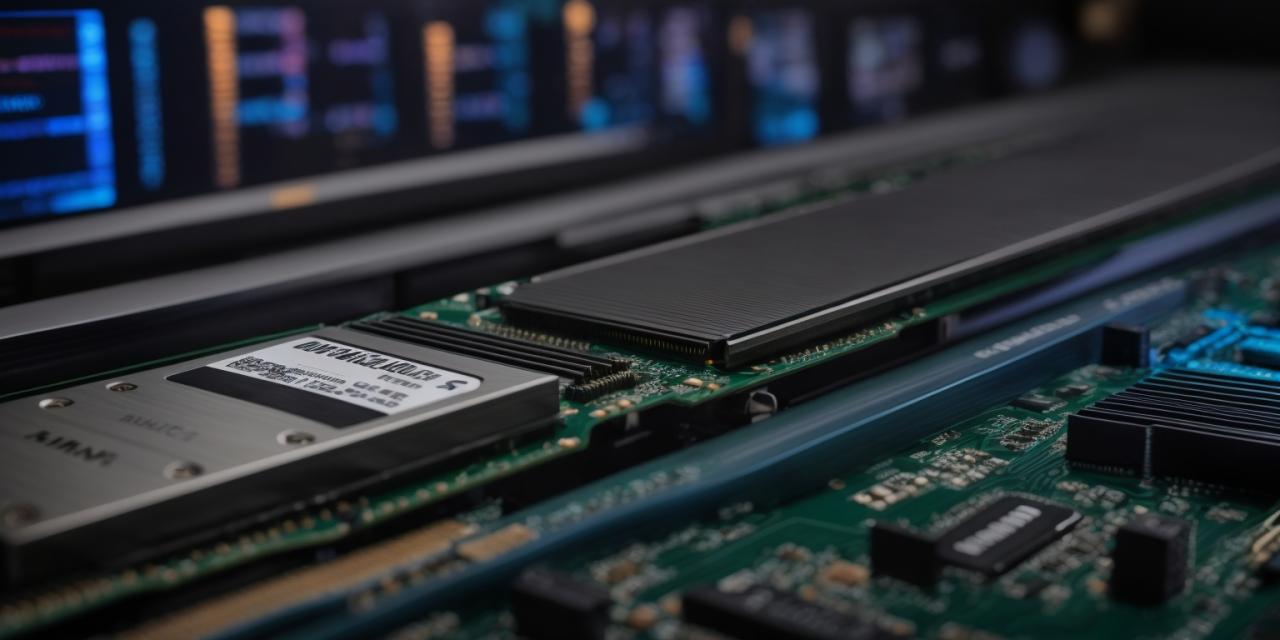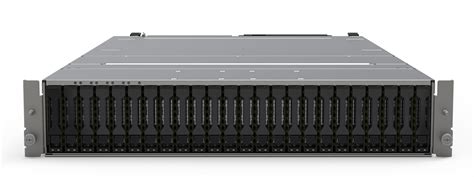In the fast-paced world of digital infrastructure, where every millisecond counts, the demand for unparalleled speed and efficiency in data storage is relentless. Traditional storage solutions, once sufficient, now struggle to keep pace with the exponential growth of data and the increasing complexity of applications. This is where NVMe servers emerge as a revolutionary force, fundamentally transforming performance across a myriad of computing environments. NVMe, or Non-Volatile Memory Express, isn’t just an incremental upgrade; it represents a paradigm shift in how data moves between storage devices and the CPU, unlocking unprecedented levels of speed, responsiveness, and scalability. For businesses and individuals alike, understanding the profound impact of NVMe servers is crucial for optimizing operations, gaining competitive advantages, and for content creators, this topic is a goldmine for driving high Google AdSense revenue through in-depth, authoritative information. This comprehensive guide will dissect the core technology behind NVMe, explore its distinct advantages over older storage protocols, delve into its diverse applications, and reveal why it’s not just the future, but the present standard for high-performance computing.
The Bottleneck Problem: Why NVMe Became Essential
For decades, the dominant storage interface was SATA (Serial ATA), initially designed for traditional hard disk drives (HDDs). While SATA proved effective for HDDs, the advent of Solid State Drives (SSDs) exposed its inherent limitations. SSDs, with their flash memory, could read and write data far faster than spinning disks, but they were still forced to communicate over the SATA interface, which acted as a severe bottleneck, throttling their true potential.
The problem wasn’t just SATA’s speed limit (around 600 MB/s for SATA III); it was the underlying protocol, AHCI (Advanced Host Controller Interface). AHCI was developed for mechanical HDDs, which are inherently slow and require a command queue depth of only 32 commands. This means it could only handle a small number of requests simultaneously, limiting parallelism and efficiency. SSDs, being electronic, can process thousands of commands concurrently, but AHCI couldn’t accommodate this capability. This created a performance ceiling for even the fastest SSDs, preventing them from realizing their full potential.
This glaring discrepancy between the speed of flash memory and the slowness of the interface protocol became the critical bottleneck in modern computing. As applications grew more data-intensive, virtualization became ubiquitous, and real-time analytics became a necessity, a new, purpose-built protocol was desperately needed to unleash the full power of flash storage.
NVMe: A Revolution in Data Transfer
NVMe was specifically designed from the ground up to take full advantage of the speed of flash memory and parallel processing. It bypasses the limitations of older protocols by connecting directly to the CPU via the PCI Express (PCIe) bus, which is typically used for high-bandwidth components like graphics cards.
Here’s a breakdown of its revolutionary characteristics:
A. Direct PCIe Connection: Bypassing Bottlenecks
Unlike SATA/AHCI, which routes through a host bus adapter (HBA), NVMe drives communicate directly with the CPU over the PCIe bus. PCIe is a high-speed serial computer expansion bus standard that offers multiple “lanes” for data transfer. Each PCIe lane can transfer data significantly faster than a SATA connection. Modern NVMe drives commonly use 4 PCIe lanes (x4), offering theoretical bandwidths far exceeding SATA. For instance, PCIe 3.0 x4 can deliver around 3.94 GB/s, while PCIe 4.0 x4 can reach roughly 7.88 GB/s, and PCIe 5.0 x4 pushes this even further to nearly 15.75 GB/s. This direct, high-bandwidth connection eliminates the historical bottleneck, allowing flash storage to operate at its true potential.
B. Optimized Command Queue: Massively Parallel Processing
This is where NVMe truly shines. While AHCI has a single command queue with a depth of 32 commands, NVMe supports up to 64,000 command queues, and each queue can hold up to 64,000 commands. This staggering level of parallelism enables the CPU to send a massive number of read/write requests to the NVMe drive simultaneously. This is critical for modern multi-threaded applications, virtualized environments, and databases that generate millions of I/O operations per second (IOPS). The ability to process so many commands concurrently dramatically reduces latency and increases throughput.
C. Reduced Latency: Faster Response Times
NVMe’s streamlined command set and direct connection to the CPU significantly reduce the number of CPU cycles required for each command, leading to much lower latency. In simple terms, data requests get processed and fulfilled much faster. For applications sensitive to delay, such as financial trading platforms, real-time analytics, or high-transaction databases, this reduction in latency translates directly into faster performance and a more responsive user experience. This efficiency also frees up CPU resources for other tasks.
D. Efficient Drivers and Command Set: Streamlined Communication
The NVMe protocol was designed specifically for flash memory, unlike AHCI which was optimized for spinning disks. Its command set is lean and efficient, requiring fewer CPU instructions per I/O operation. This efficiency means more work gets done with less overhead, contributing to higher IOPS and lower latency. Most modern operating systems include native NVMe drivers, ensuring seamless integration and optimal performance without the need for additional software.
E. Lower Power Consumption (for equivalent performance): Energy Efficiency
While high-performance drives often consume more power under heavy load, NVMe’s efficiency means it can achieve significantly higher performance (IOPS/bandwidth) per watt compared to SATA drives. This is particularly relevant in data centers where power and cooling are major operational costs. NVMe drives can also enter low-power states more effectively when idle, further contributing to energy savings.
Form Factors of NVMe Drives
NVMe drives come in several physical formats to suit various server and client device requirements:
A. M.2: The most common form factor for client PCs and many servers. These are small, gum-stick-sized modules that plug directly into an M.2 slot on the motherboard, taking up minimal physical space. B. U.2: A 2.5-inch form factor that resembles traditional SATA SSDs but uses a U.2 connector (SFF-8639) to connect to a PCIe slot via a cable. These are popular in enterprise servers for their hot-swap capabilities and higher capacities. C. PCIe Add-in Card (AIC): Resembling a graphics card, these plug directly into a PCIe expansion slot. Often used for maximum performance in high-end servers, as they can sometimes support more PCIe lanes or multiple NVMe controllers on a single card. D. EDSFF (Enterprise and Data Center SSD Form Factor): Newer form factors (e.g., E1.S, E1.L, E3.S, E3.L) designed specifically for enterprise and data center applications, offering even greater density, better thermal characteristics, and improved serviceability. These are becoming increasingly popular in large-scale server deployments.
The Transformative Impact of NVMe on Server Performance
The integration of NVMe technology into servers has not merely improved performance; it has fundamentally transformed capabilities across a wide range of applications and industries.
A. Database Performance: Accelerated Transactions
Databases, especially transactional databases (OLTP – Online Transaction Processing) and analytical databases (OLAP – Online Analytical Processing), are highly dependent on storage I/O performance. NVMe servers dramatically accelerate database operations by:
- Reducing Query Latency: Faster reads and writes mean queries return results much quicker.
- Boosting Transaction Throughput: The high IOPS capabilities allow databases to handle a far greater number of concurrent transactions.
- Faster Data Ingestion: Loading large datasets into databases becomes significantly quicker, impacting data warehousing and analytics.
- Improved Indexing and Sorting: Operations that involve frequent access to data indexes are sped up, enhancing overall database efficiency.
This directly translates to more responsive applications, improved customer experiences, and faster business intelligence.
B. Virtualization and Cloud Computing: Enhanced VM Density
Virtualization platforms (like VMware, Hyper-V, KVM) rely heavily on storage performance, as multiple virtual machines (VMs) contend for shared storage resources. NVMe servers provide the necessary horsepower to:
- Increase VM Density: Run more virtual machines on a single physical server without performance degradation, leading to significant cost savings in hardware and power.
- Accelerate VM Boot Times: Virtual machines start up much faster due to rapid data loading.
- Improve Application Responsiveness within VMs: Applications running inside VMs perform as if they were on bare metal, reducing “noisy neighbor” issues.
- Faster VDI (Virtual Desktop Infrastructure) Performance: Provide a snappier, more seamless desktop experience for virtual desktop users, even under heavy load.
For cloud providers, NVMe is a game-changer, enabling them to offer higher performance tiers and denser hosting environments.
C. Big Data Analytics and AI/ML Workloads: Rapid Data Processing
The era of Big Data and Artificial Intelligence (AI) / Machine Learning (ML) demands unprecedented speed in data ingestion, processing, and analysis. NVMe servers are ideal for these data-intensive workloads:
- Faster Data Ingestion: Rapidly load massive datasets from storage into memory for processing. This is critical for real-time analytics and data streaming.
- Accelerated Model Training: ML model training involves iterative reading and writing of large datasets. NVMe speeds up these I/O-bound operations, significantly reducing training times.
- Quicker Data Exploration: Data scientists can iterate faster on their analysis, reducing the time from data to insight.
- Support for HPC (High-Performance Computing): NVMe is fundamental in HPC clusters where simulations and complex computations require lightning-fast access to data.
The ability to process vast amounts of data at high velocity is a cornerstone of modern data science and AI.
D. Content Delivery Networks (CDNs) and Media Streaming: Enhanced User Experience
CDNs and media streaming services require extremely low latency and high throughput to deliver content seamlessly to millions of users worldwide. NVMe servers improve performance by:
- Faster Content Loading: Web pages, images, and video start loading almost instantly.
- Reduced Buffering: High bandwidth ensures smooth, uninterrupted video and audio streaming, even for 4K/8K content.
- Improved Concurrent User Support: Handle a larger number of simultaneous content requests without performance degradation.
- Quicker Cache Refresh: Update cached content faster, ensuring users always receive the most recent version.
This directly translates to a superior user experience and higher engagement for online platforms.
E. Web Hosting and E-commerce: Blazing Fast Websites
Website loading speed is a critical factor for user experience, SEO ranking, and conversion rates in e-commerce. NVMe servers provide a significant boost:
- Faster Page Load Times: All website assets (HTML, CSS, JavaScript, images) are served much quicker, leading to lower bounce rates.
- Accelerated Database Queries: E-commerce sites rely heavily on databases for product catalogs, user accounts, and transactions, all of which benefit from NVMe’s speed.
- Improved Concurrent User Handling: Websites can handle more simultaneous visitors without slowing down.
- Quicker Server Response Times: Overall server responsiveness is dramatically improved, creating a smoother Browse experience.
For any online business, NVMe represents a direct investment in customer satisfaction and increased revenue.
Implementing NVMe in Your Infrastructure

Integrating NVMe into server infrastructure involves several considerations to maximize benefits:
A. Server Hardware Compatibility
Ensure your servers have compatible PCIe slots and M.2/U.2 connectors. Modern server motherboards generally support NVMe, but older generations might require PCIe add-in cards. For maximum performance, ensure the PCIe lanes are dedicated or configured appropriately.
B. Operating System Support
Most modern operating systems (Windows Server, Linux distributions, VMware ESXi) have native NVMe drivers built-in, simplifying deployment. Ensure your OS version is up-to-date for optimal driver performance.
C. Proper Cooling and Airflow
NVMe drives, especially high-performance models, can generate more heat than SATA SSDs due to their higher data transfer rates. Adequate server cooling and proper airflow are crucial to prevent thermal throttling and ensure sustained performance. This is particularly important for M.2 drives in compact server chassis.
D. Storage Management and Monitoring
Leverage advanced storage management tools to monitor NVMe drive health, performance metrics (IOPS, latency, bandwidth), and thermal conditions. Implement appropriate RAID configurations (if necessary, though RAID for NVMe is evolving) or software-defined storage solutions to ensure data redundancy and availability.
E. Network Considerations
While NVMe directly addresses storage bottlenecks, ensure your network infrastructure can keep up. High-speed networking (10GbE, 25GbE, 100GbE) is essential to fully capitalize on NVMe’s speed when data is being transferred across the network. Technologies like NVMe over Fabrics (NVMe-oF) further extend NVMe’s benefits over network fabrics like Fibre Channel or Ethernet.
Future of NVMe in Server Technology
The evolution of NVMe is far from over. Several key trends are shaping its future in server technology:
A. PCIe 5.0 and Beyond: Ever-Increasing Bandwidth
PCIe 5.0 is already available, doubling the bandwidth of PCIe 4.0, and PCIe 6.0 is on the horizon. This continuous increase in bandwidth will further push the boundaries of NVMe performance, supporting even more demanding applications and denser storage arrays.
B. NVMe over Fabrics (NVMe-oF): Disaggregated Storage
NVMe-oF is a critical innovation that extends the NVMe protocol across network fabrics (like Fibre Channel, RoCE, or TCP/IP). This allows for disaggregated storage, where NVMe SSDs are pooled and accessed over a network as if they were local, offering centralized management, improved resource utilization, and extreme performance for distributed applications and cloud environments. It represents a significant step towards truly composable infrastructure.
C. Computational Storage Drives (CSDs): Processing at the Edge
CSDs integrate processing capabilities directly onto the NVMe SSD. This allows certain data processing tasks (like compression, encryption, or specific analytical queries) to be performed directly on the drive, without moving data to the CPU. This significantly reduces data movement, lowers latency, and frees up CPU resources, particularly beneficial for data-intensive applications and edge computing.
D. Quad-Level Cell (QLC) and Penta-Level Cell (PLC) NAND: Higher Density, Lower Cost
Advancements in NAND flash technology, such as QLC and the emerging PLC, allow for storing more bits per cell, leading to higher-capacity NVMe drives at a lower cost per gigabyte. While these might have slightly lower endurance or performance than TLC or MLC NAND, they are crucial for driving down the cost of large-scale NVMe deployments, making high-performance storage more accessible.
E. Zoned Namespaces (ZNS): Optimized for Data Streams
ZNS is an NVMe specification that allows host and storage devices to manage data in “zones,” optimizing for sequential writes within those zones. This is particularly beneficial for applications with sequential data streams (like logging, analytics, or surveillance) as it reduces write amplification and extends the lifespan of the NAND flash, making it more efficient for certain workloads.
NVMe Is the Standard for Modern Servers

The advent of NVMe servers marks a fundamental shift in the architecture of high-performance computing, unequivocally solidifying its position as the new standard for data storage. By entirely rethinking the interface between storage and the CPU, NVMe has shattered long-standing performance bottlenecks, unleashing the full, unbridled potential of flash memory. From accelerating complex database transactions and dramatically increasing the density of virtualized environments to powering the next generation of AI/ML workloads and delivering lightning-fast web experiences, NVMe is not merely an improvement; it is a transformative technology. Its adoption is a clear indicator of a future where instantaneous data access and ultra-low latency are not luxuries, but core requirements for competitive advantage. As businesses continue to generate and process ever-larger volumes of data, investing in NVMe server infrastructure becomes an essential strategic move, ensuring that their digital operations are not just keeping pace, but actively driving innovation and efficiency in an increasingly data-driven world. For any enterprise or individual dependent on peak digital performance, embracing NVMe is no longer an option, but a strategic imperative that directly impacts operational agility, customer satisfaction, and ultimately, success in the digital age.







